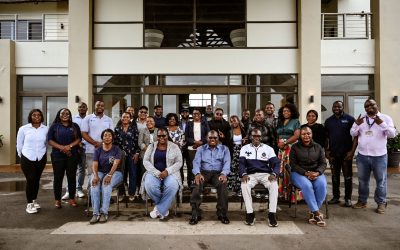Higher Education in Zambia: Progress and Challenges
Higher education in Zambia has recently seen remarkable growth in various areas because of transformative policy environment that has led to the growth of private sector participation. This has seen widening of access and participation, expansion of academic facilities and increased attention to quality assurance.
Evidently, Higher Education Institutions (HEIs) in Zambia have become attractive to students from other countries such as Namibia, Malawi, Lesotho, Swaziland, Botswana, Zimbabwe, and others from Sub Sahara Africa. Public universities in Zambia are internationally recognised in terms of quality of programmes offered, teaching, research, and knowledge transfer. The University of Zambia (UNZA), Copperbelt University (CBU), Mulungushi University, and lately Levy Mwanawasa Medical University and Zambia University College of Technology have well developed programmes and partnerships with leading overseas institutions, giving more credibility to their academic programmes.
The private university space is rapidly emerging as a reliable complement to public universities in the country. Some of them such as University of Lusaka, Gideon Robert University, Lusaka Apex Medical University, Information Communication University, Rockview University, Rusangu University, DMI St Eugene University and Texila American University have managed to attract a good number of international students in various study disciplines such as education, health, agriculture and information technology.
In spite of this growth, higher education system in Zambia is still facing a number of challenges; inadequate suitable teaching and learning facilities, inadequate appropriately qualified teaching staff, and limited capacity to develop the right curricula, all pose a threat to the quality and recognition of higher education in Zambia.
Further, there also remains inequalities in access to higher education in Zambia. Unlike access to basic education, higher education access in Zambia has not been broadened to include all social groups. There is unequal distribution of HEIs in the country. The highest number of HEIs are situated in urban centres, with a higher concentration being along the line of railway. This skewed distribution has continued to affect access among those in rural parts of Zambia.
Similarly, the concentration of training programmes provided by HEIs in the country do not show the responsiveness towards government’s policy of supporting Science, Technology, Engineering and Mathematics (STEM), which is a heartbeat of innovation, research and development. The challenge here is that supporting STEM programmes requires substantial investment in infrastructure, which is a challenge for most institutions in the country that are evidently struggling financially.
Suffice to note that there is already sufficient political will from the New Dawn Government to address most of these challenges in order to improve higher education the country. This is evidenced by, among other ways, the repeated favourable budget allocations to higher education. The 2022 and 2023 national budgets have been progressively friendly to the education sector. Besides, the government has come up with innovative funding approaches to increase the financial sustainability of the public HEIs. There is also a steady increase in funding towards research and development in public HEIs. There is also funding towards establishing centres of excellence at CBU and UNZA for the start, as the initiative is to cover all public HEIs.
Therefore, the burden lies squarely on the Ministry of Education and Higher Education Authority (HEA) to quickly work around finding solutions to the above outlined challenges in order to support and sustain the current growth of the higher education sector in Zambia. As the country establishes itself as an emerging choice for higher education in Africa, the responsibility of safeguarding quality standards and supporting the HEIs towards this goal is increasingly becoming so demanding for HEA.




